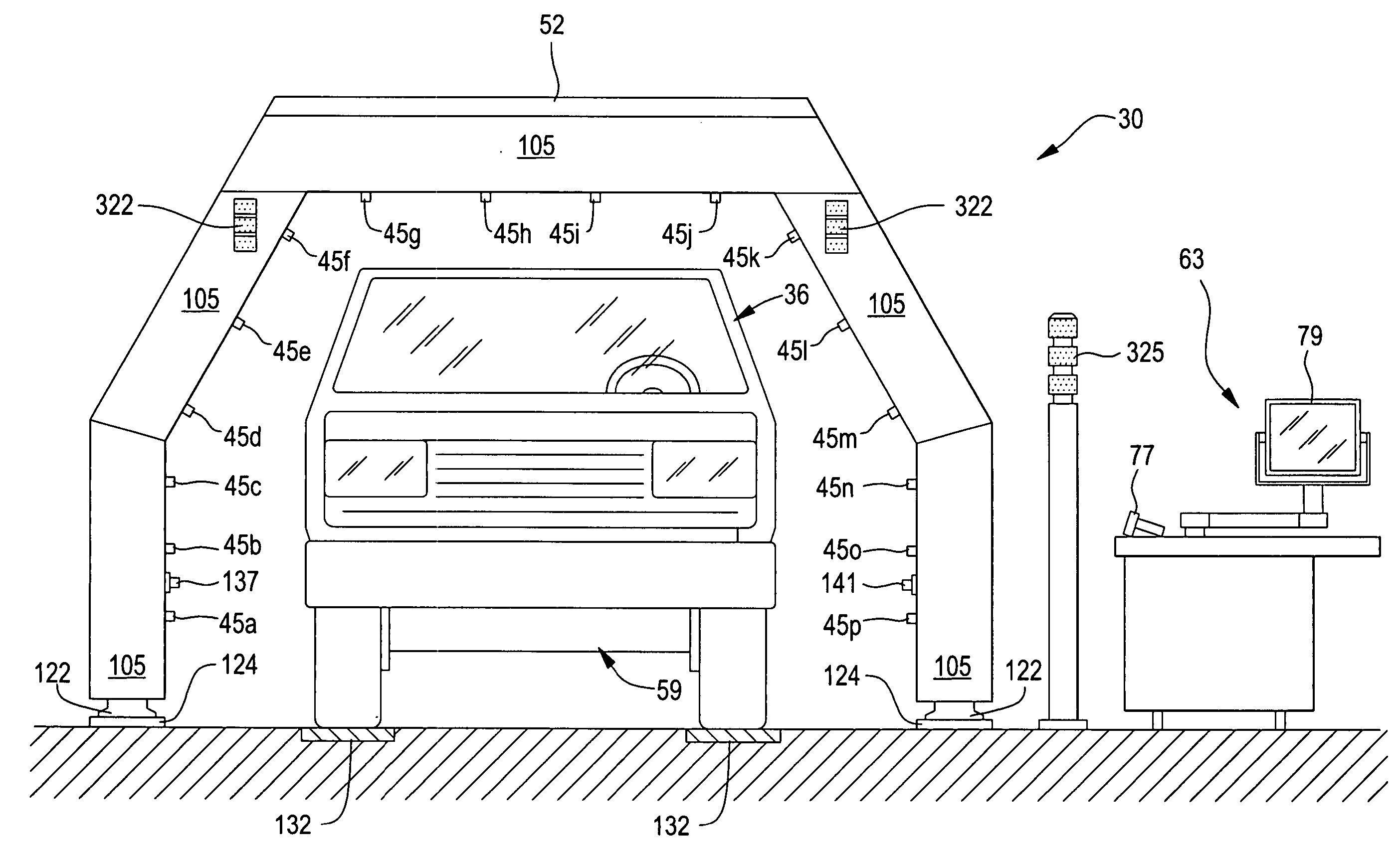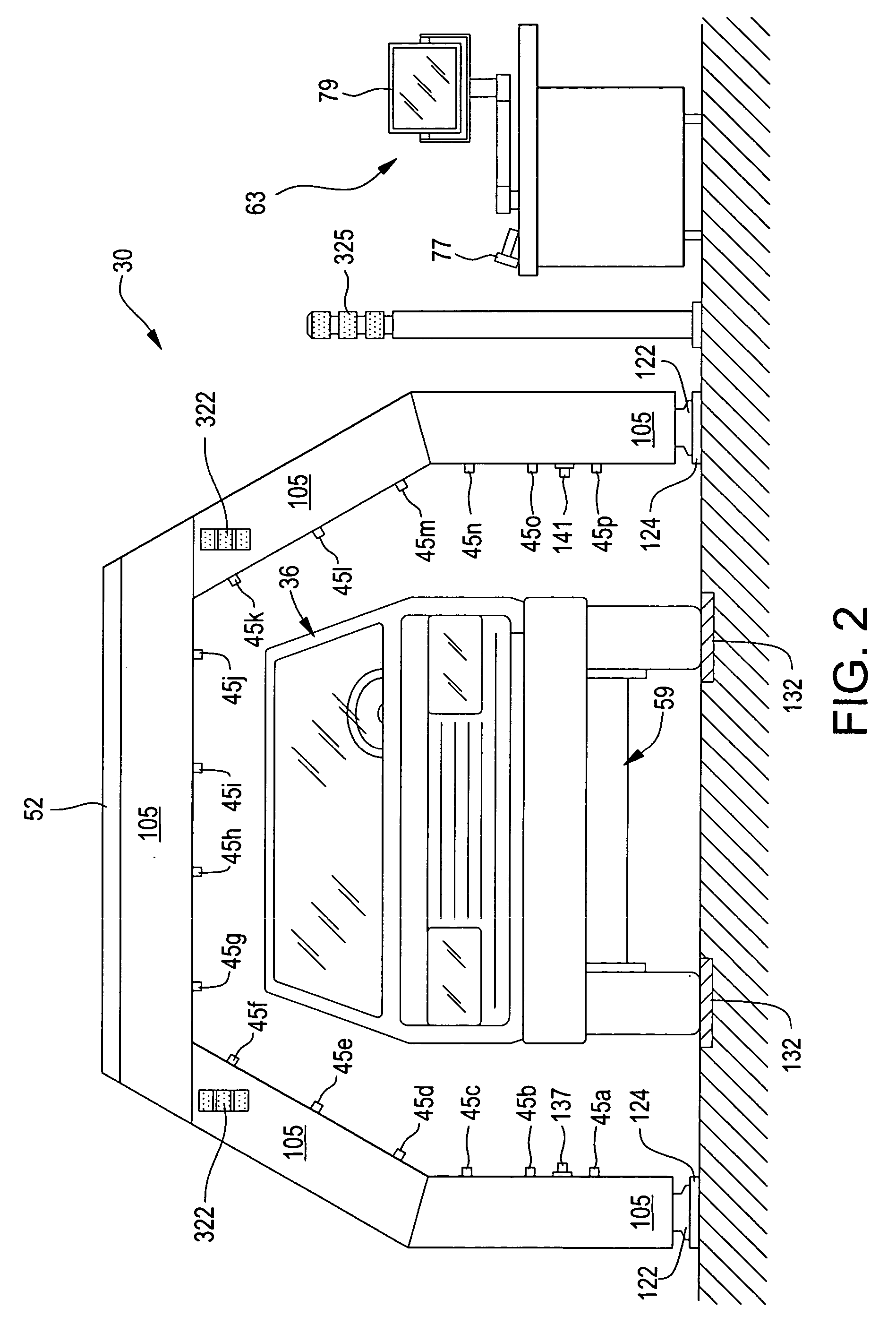System and method for detecting leaks in sealed compartments
a leak detection and sealed compartment technology, applied in vehicle testing, structural/machine measurement, instruments, etc., can solve the problems of significant water intrusion, high visual inspection reliability, and significant expenditure of time and material for repairs
- Summary
- Abstract
- Description
- Claims
- Application Information
AI Technical Summary
Benefits of technology
Problems solved by technology
Method used
Image
Examples
Embodiment Construction
[0055] The present disclosure generally pertains to systems and methods for reliably detecting leaks in sealed compartments, such as compartments within vehicles. In several embodiments of the present disclosure, an apparatus having a sealed compartment, such as a vehicle (e.g., automobile, airplane, etc.), is moved past an array of ultrasonic sensors. An ultrasonic transmitter is placed in the sealed compartment and emits ultrasonic energy as the apparatus is moved past the ultrasonic sensors. A leak can be automatically and non-destructively detected by analyzing data from the ultrasonic sensors.
[0056] For purposes of illustration, the systems and methods of the present disclosure will be described hereafter as detecting leaks within sealed compartments, such as passenger compartments or trunks, of vehicles (e.g., automobiles, aircraft, boats, etc.). It is to be understood, however, that the systems and methods of the present disclosure may be similarly used to detect leaks in ot...
PUM
 Login to View More
Login to View More Abstract
Description
Claims
Application Information
 Login to View More
Login to View More - R&D
- Intellectual Property
- Life Sciences
- Materials
- Tech Scout
- Unparalleled Data Quality
- Higher Quality Content
- 60% Fewer Hallucinations
Browse by: Latest US Patents, China's latest patents, Technical Efficacy Thesaurus, Application Domain, Technology Topic, Popular Technical Reports.
© 2025 PatSnap. All rights reserved.Legal|Privacy policy|Modern Slavery Act Transparency Statement|Sitemap|About US| Contact US: help@patsnap.com



